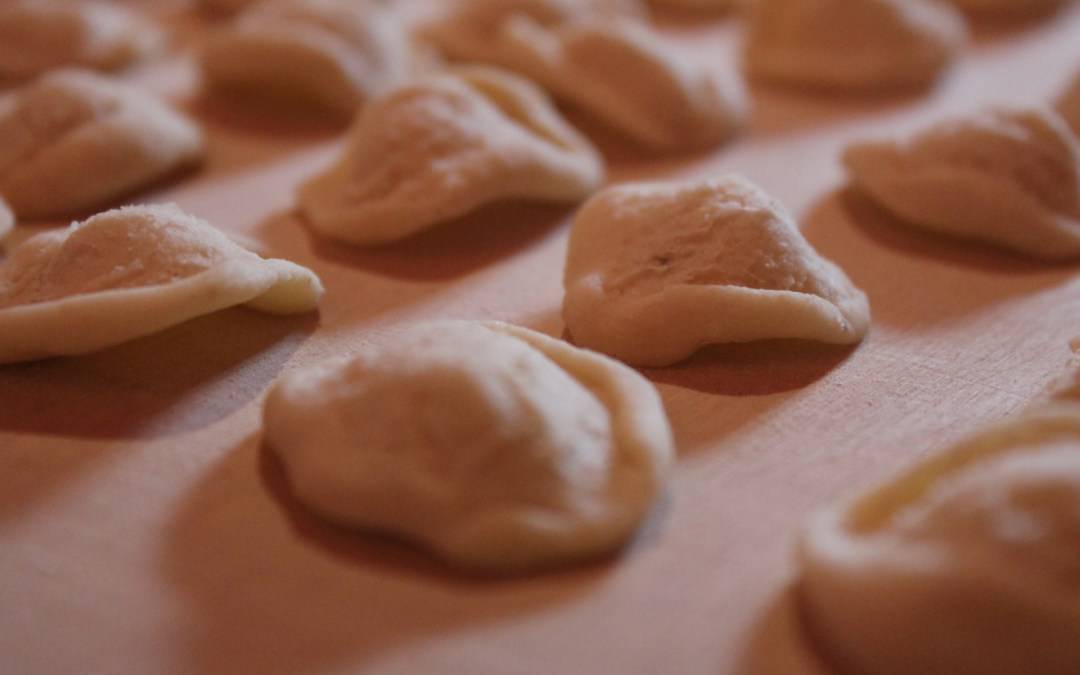Growing up in an Italian Canadian household my mother always added semola flour to her bread and thick crust pizza doughs. It always gave the dough a lovely yellow tinge and produced wonderful results. It used to be extremely hard to find in North America, but I am finding it in more and more stores. It’s used exclusively for eggless pasta in the South of Italy as well as in some of the best bread in all of Italy…which can be found in Altamura, Puglia!
There is a lot of misconception that Semolina and Semola are the same thing…well not really. You see they are both produced from durum wheat, a hard wheat, but it is the grind that is the difference. Semolina is course, closer to corn meal then flour. The Italian Semola is exceptionally fine or “rimacinata” or “twice milled”. The Italian Semola will say right on the label…”Semola rimacinata di grano duro”…and this is what you will need to prepare the easiest of all pastas.
See our YouTube video on the subject, below.
Eggless pasta was used mainly in the poorer parts of Italy when eggs were scarce. As always, Italians rose to the challenge of producing some of their most famous dishes out of need. “La Cucina Povera” or “The Poor Kitchen” is just that …using one’s imagination with limited ingredients to produce delicious dishes.
We make this pasta and many other recipes on our experiential, Food & Wine tours to Southern Italy and our Online cooking classes. We also enjoy cooking, wine tasting and touring UNESCO World Heritage sites on our small group, food & wine tours to the Mediterranean…join us some time and enjoy “cooking like a Nonna”!
Ciao for now, Natalina xo

Pasta di Semola
Ingredients
- 200 grams semola rimacinata di grano duro
- 100 ml water
- 1 pinch salt
Instructions
- Pour the flour in a mound on the table. Add the salt and mix. Create a well in the middle. Pour the water in the well. Slowly start mixing the water with the surrounding flour without breaking down the walls. Gradually incorporate all the flour and water and start kneading the dough. If it is too dry add more water, only a bit at a time. If it is too sticky add a little more flour. It should be similar to playdough consistency. Continue kneading for 5-10 minutes until it is smooth and is not sticky at all. Let it rest covered for 10 minutes.
- This pasta is usually shaped by hand into orecchiette (pictured), cavatelli or pici ...pici being the easiest. Roll out a piece of dough to desired thickness, slice thin pieces. Roll the pieces into noodles. (think Udon noodles!) Dry slightly. Boil in salted water until al dente! Enjoy with your favorite sauce.
Watch a video on our YouTube channel on this subject here:

